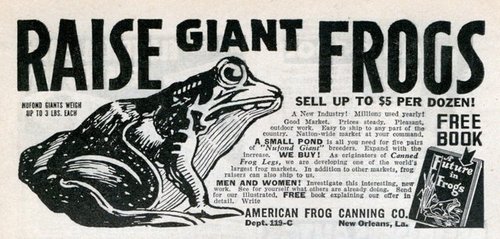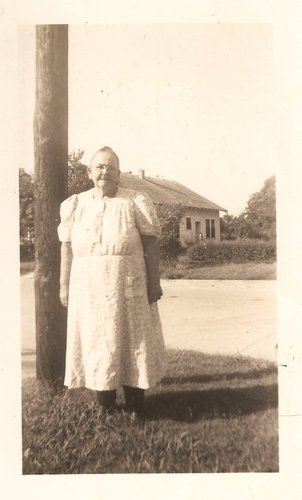.JPG)
Bullfrog Farming in Hardin County
By Renee Wells
Bullfrog farming could be an idea from a Mark Twain story. But as a strategy for survival, it seemed like a last resort to some city folks who moved to Hardin County during the Great Depression.
The practice of "living off the land" appealed to the widowed Mrs. Walter C. "Grammy" Harder of Beaumont. She persuaded her grown children and their families that it would be a good idea to move to the country where they could stay together, pool their resources, and supplement their income with produce from the garden while they searched for steady work. One of the sons, Walter "Buddy" Harder, was employed at the headquarters of Gulf Oil Co. in Colombia and sent much of his monthly income to his mother which she shared with the others.
Under the direction of Grammy, the new land venture in 1930 was near the community of Loeb, located a few miles north of Beaumont. The family purchased two pieces of property near the T&NO railroad tracks, and twelve family members moved to the houses already on the property. For the most part the children enjoyed their situation, riding to school in the neighbor's wagon and swimming in the branch in warm weather. For the adults, however, it was a real struggle.
Problems developed early on, for the family had little idea of farming outside of growing tomatoes in the yard of their Beaumont home. Plans for the large garden were delayed because, as Grammy wrote in her weekly letter to Buddy in Colombia, the soil had not ever been "broken up" and it took a two-horse team to plow it. They even had to replant the small kitchen garden because of rain and late cold snaps. In addition to this, their well caved in and a new one had to be dug. The Harder men were working hard to rebuild the fences to keep in the animals, especially the red heifer that often got out and had to be chased down. Their steer had been killed by a train and Grammy was trying to collect damages from the railroad.
It was quite a blow to receive news that their title was not clear; they didn't own the land under their barn. More money was needed to purchase this piece of property. The men, always on the lookout for better opportunities, now had another incentive. Newspaper and magazine advertisements of the 1930s touted the profits to be made from growing bullfrogs: "Raise Giant Frogs-Sell up to $5 a dozen." The brothers ordered the free booklet "Future in Frogs" and convinced Grammy that it would be the answer to their problems. One brother even cashed in his insurance policy for funds. They dug the required ponds and ordered the frogs, but raising bullfrogs was more difficult than expected. A well and windmill were needed to provide water in the ponds and minnows had to be caught to feed the frogs.
In her weekly letter, Grammy tried to be supportive of her sons' efforts, but she sounded a little skeptical as she wrote that "they claim you will have some to sell in a year. It looks like a good proposition, something that will bring in money, after you get started." Grammy's misgivings were right. Lack of a market for the bullfrogs coupled with the decimation of their young frogs by flocks of herons doomed the project. Grammy and her family soon moved back to Beaumont where jobs were more plentiful and bullfrog farming became a part of the Harder history collected in Grammy's letters.

